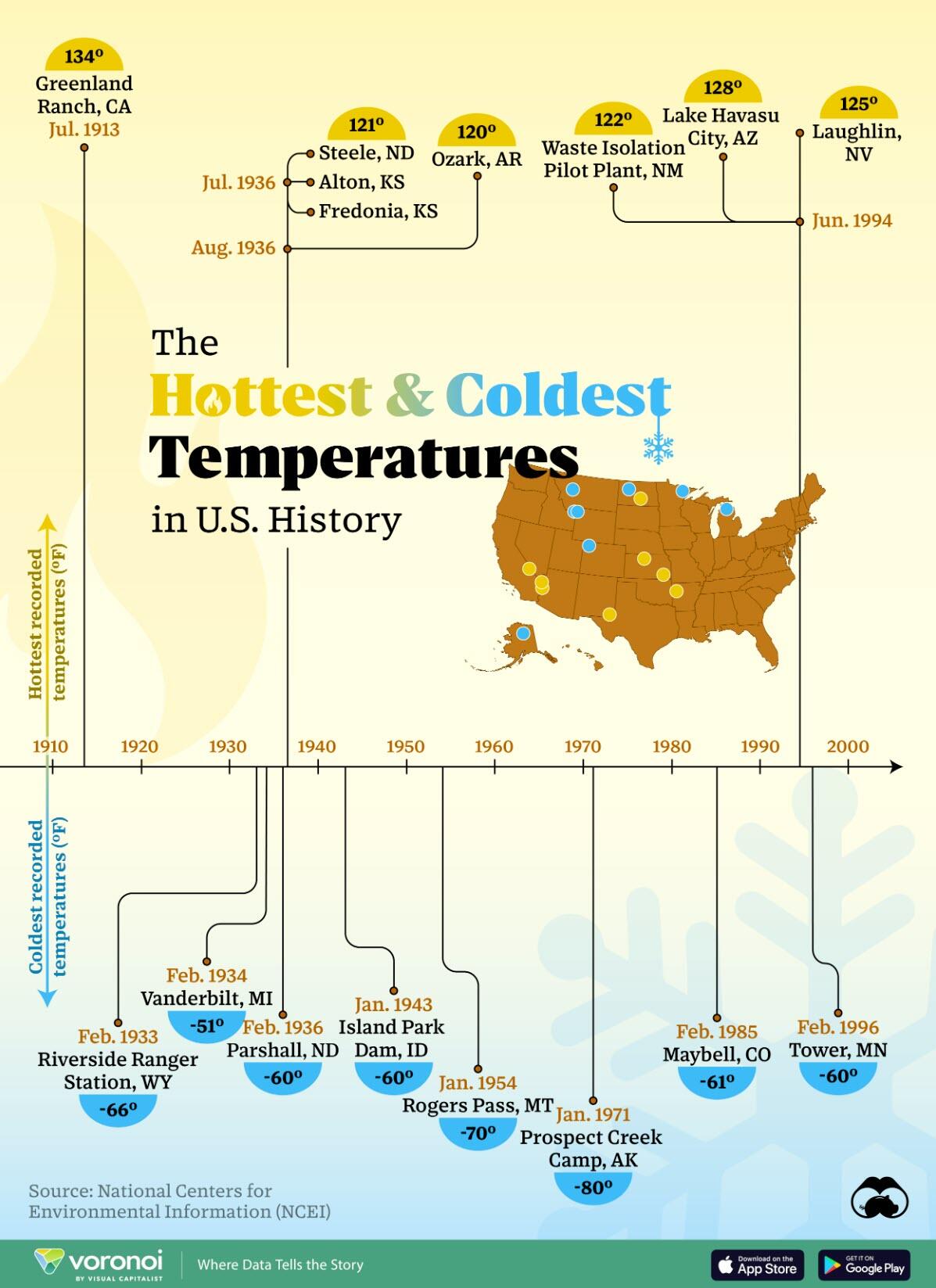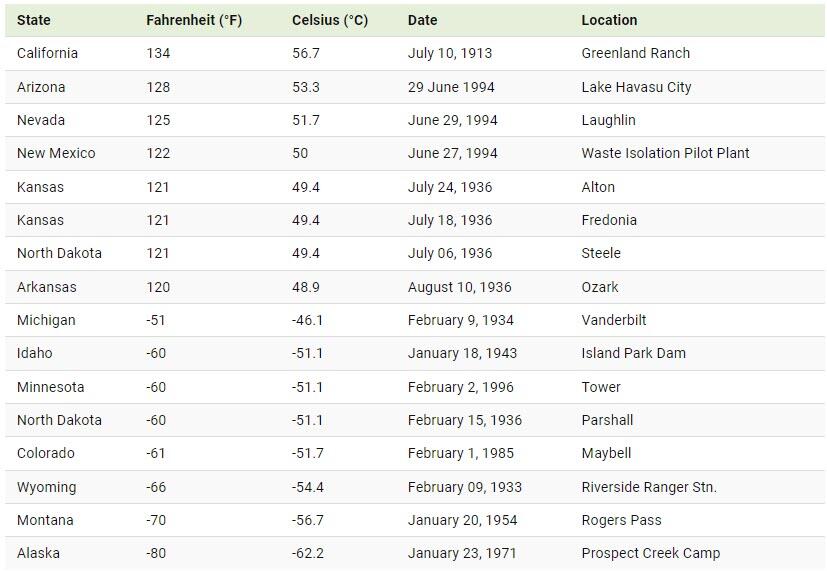
Inferno and Ice: America's Temperature Extremes are Just the Beginning
The United States has experienced severe heat waves this summer, breaking daily temperature records and causing dangerous consequences like wildfires nationwide.
This graphic, via Visual Capitalist's Bruno Venditti, shows the hottest and coldest temperatures ever recorded in the United States.
Data was sourced from the National Centers for Environmental Information.
California and Alaska Hold Records for Extreme Temperatures
Extreme heat is a deadly phenomenon, responsible for approximately 1,220 fatalities each year in the United States.
The hottest temperature ever recorded in the country was an astonishing 134.4°F (56.7°C) in Death Valley, California, on July 10, 1913. This stands as the highest ambient air temperature ever recorded on the surface of the Earth. However, this reading, along with several others from that period, is disputed by some modern experts.
Death Valley has a subtropical, hot desert climate characterized by long, extremely hot summers, short, warm winters, and minimal rainfall. Its extreme dryness is due to its location in the rain shadow of four major mountain ranges.
Conversely, the coldest temperature ever recorded was -80°F (-62.2°C) at Prospect Creek Camp, Alaska, on January 23, 1971. Prospect Creek is a very small settlement approximately 180 miles (290 km) north of Fairbanks. In the past, it was home to numerous mining expeditions and served as a camp for the construction of the Trans-Alaska Pipeline System.
Currently, and perhaps understandably, no permanent residents live in this area.
This article originally appeared on Zero Hedge.













